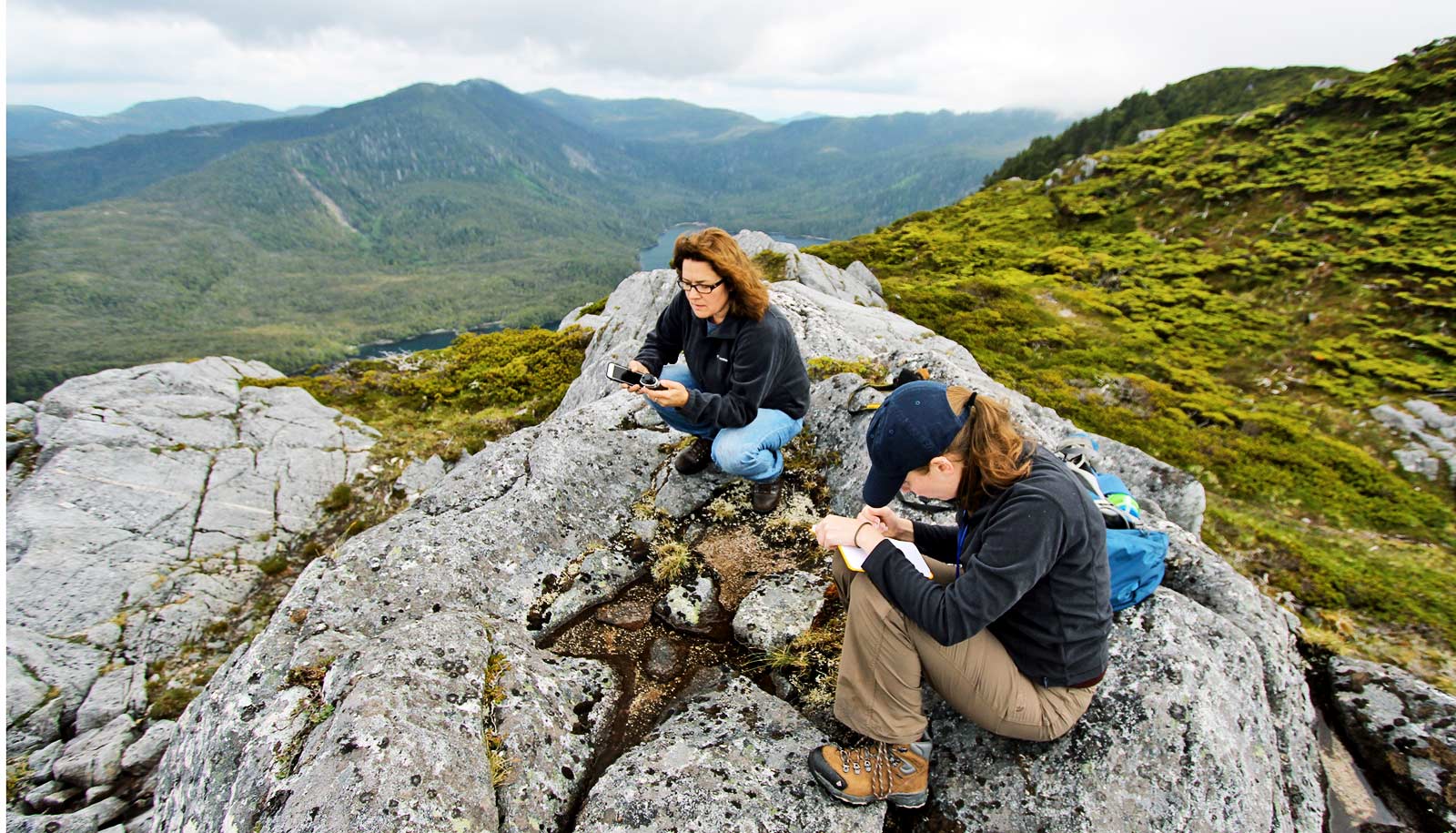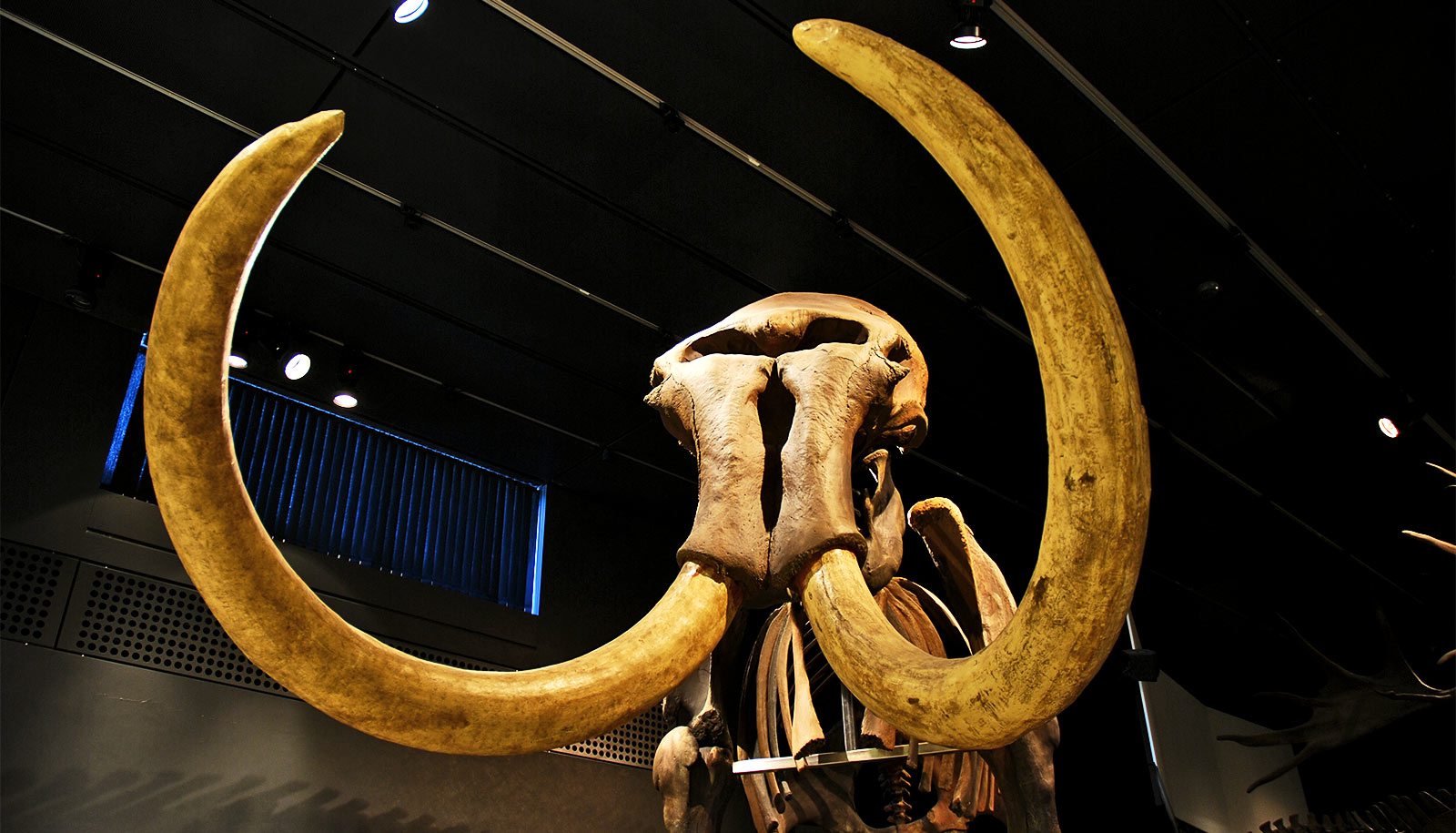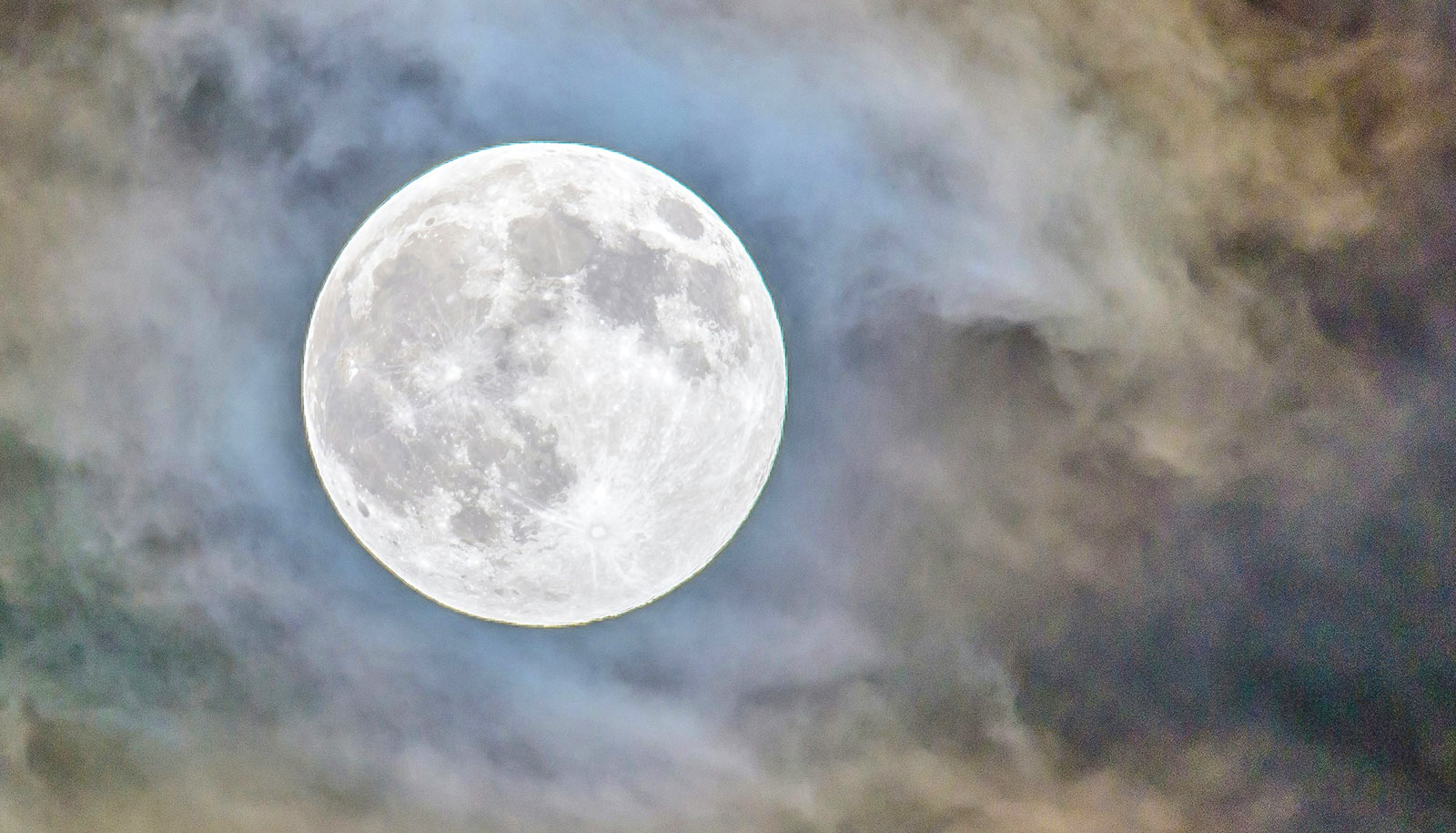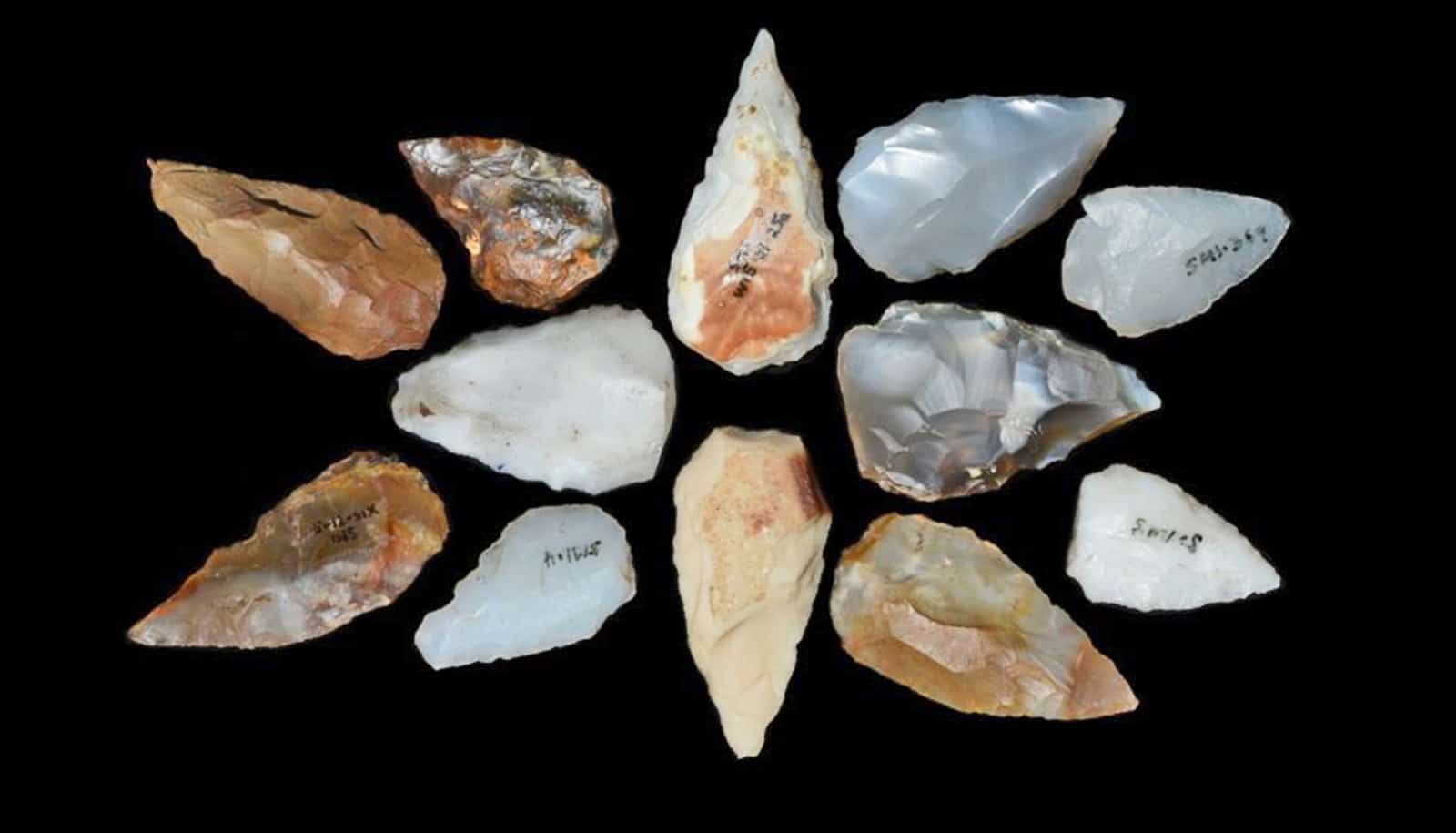When and how did the first people come to the Americas? One dominant theory says that the first Americans took a coastal route along Alaska’s Pacific border to enter the continent. A new geological study provides compelling evidence to support this hypothesis.
The conventional story, however, says that the earliest settlers came via Siberia, crossing the now-defunct Bering land bridge on foot and trekking through Canada when an ice-free corridor opened up between massive ice sheets toward the end of the last ice age.
But with recent archaeological evidence casting doubt on this thinking, scientists are seeking new explanations.
By analyzing boulders and bedrock, a research team shows that part of a coastal migration route became accessible to humans 17,000 years ago. During this period, ancient glaciers receded, exposing islands of southern Alaska’s Alexander Archipelago to air and sun—and, possibly, to human migration.
The timing of these events is key: Recent genetic and archaeological estimates suggest that settlers may have begun traveling deeper into the Americas some 16,000 years ago, soon after the coastal gateway opened up.
The research appears in Science Advances today.
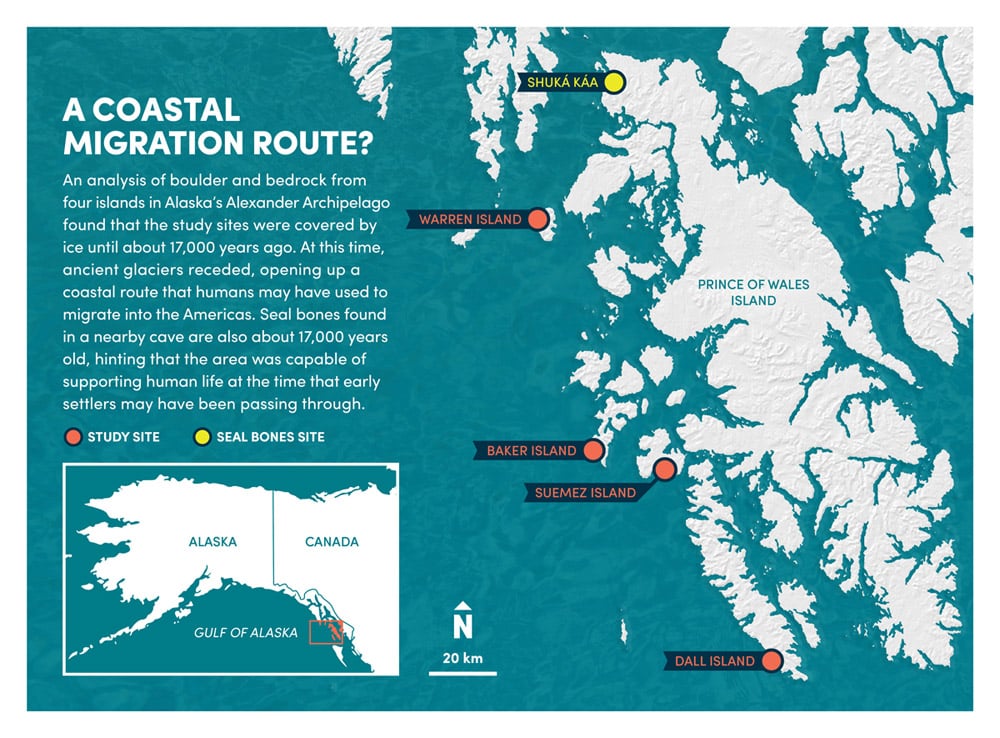
“People are fascinated by these questions of where they come from and how they got there,” says lead scientist Jason Briner, professor of geology at the University at Buffalo and a member of the UB RENEW (Research and Education in eNergy, Environment and Water) Institute. “Our research contributes to the debate about how humans came to the Americas. It’s potentially adding to what we know about our ancestry and how we colonized our planet.”
“Our study provides some of the first geologic evidence that a coastal migration route was available for early humans as they colonized the New World,” says geology PhD candidate Alia Lesnek, the study’s first author. “There was a coastal route available, and the appearance of this newly ice-free terrain may have spurred early humans to migrate southward.”
The findings do not mean that early settlers definitely traversed Alaska’s southern coast to spread into the Americas: The project examined just one section of the coast, and scientists would need to study multiple locations up and down the coastline to draw firmer conclusions.
Still, the work is exciting because it hints that the seafaring theory of migration is viable.
The bones of an ancient ringed seal—which other researchers previously discovered in a nearby cave—provide further, tantalizing clues. They hint that the area was capable of supporting human life at the time that early settlers may have been passing through, Briner says. The new study calculates that the seal bones are about 17,000 years old. This indicates that the region was ecologically vibrant soon after the ice retreated, with resources including food becoming available.
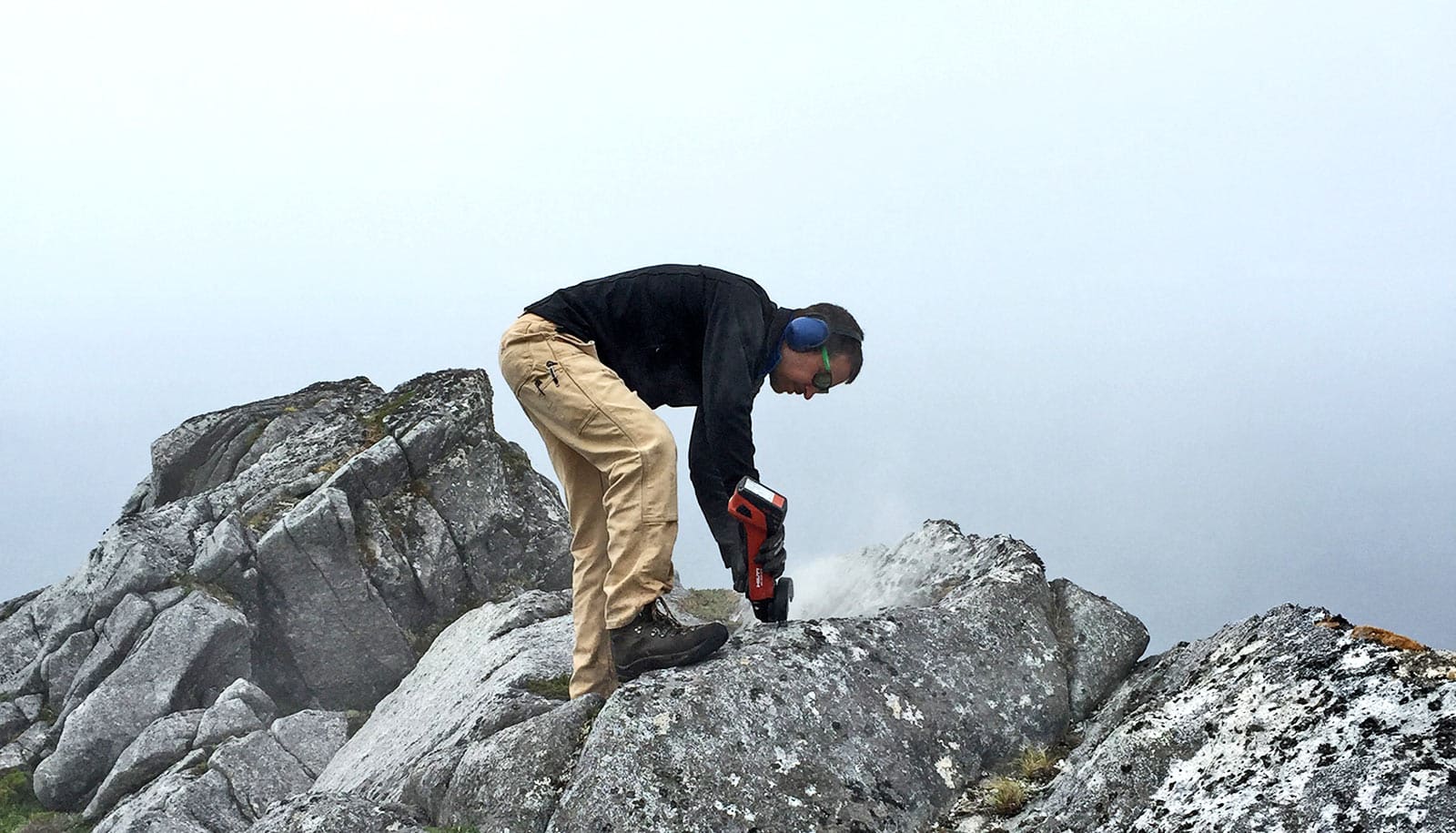
‘The glacier was here’
To conduct their study, the scientists journeyed to four islands within the Alexander Archipelago that lie about 200 miles south/southeast of Juneau.
The team traveled by helicopter to reach these remote destinations. As soon as the researchers arrived, Briner knew that ice had once covered the islands.
“Where we looked at it, the coastal route was not only open—it opened at just the right time.”
“The landscape is glacial,” he says. “The rock surfaces are smooth and scratched from when the ice moved over it, and there are erratic boulders everywhere. When you are a geologist, it hits you in the face. You know it immediately: The glacier was here.”
To pinpoint when the ice receded from the region, the team collected bits of rock from the surfaces of boulders and bedrock. Later, the scientists ran tests to figure out how long the samples—and thus the islands as a whole—had been free of ice.
The researchers used a method called surface exposure dating. As Lesnek explains, “When land is covered by a glacier, the bedrock in the area is hidden under ice. As soon as the ice disappears, however, the bedrock is exposed to cosmic radiation from space, which causes it to accumulate certain chemicals on their surface. The longer the surface has been exposed, the more of these chemicals you get. By testing for these chemicals, we were able to determine when our rock surfaces were exposed, which tells us when the ice retreated.
“We use the same dating method for huge boulders called erratics. These are big rocks that are plucked from the earth and carried to new locations by glaciers, which actually consist of moving ice. When glaciers melt and disappear from a specific region, they leave these erratics behind, and surface exposure dating can tell us when the ice retreated.”
For the region that was studied, this happened roughly 17,000 years ago.
Good timing
In recent years, evidence has mounted against the conventional thinking that humans populated North America by taking an inland route through Canada.
To do so, they would have needed to walk through a narrow, ice-free ribbon of terrain that appeared when two major ice sheets started to separate. But recent research suggests that while this path may have opened up more than 14,000 years ago, it did not develop enough biological diversity to support human life until about 13,000 years ago, Briner says.
That clashes with archaeological findings that suggest humans were already living in Chile about 15,000 years ago or more, and in Florida 14,500 years ago.
The coastal migration theory provides an alternative narrative, and the new study may mark a step toward solving the mystery of how humans came to the Americas.
“Where we looked at it, the coastal route was not only open—it opened at just the right time,” says Charlotte Lindqvist, associate professor of biological sciences and a visiting associate professor at Nanyang Technological University, Singapore. “The timing coincides almost exactly with the time in human history that the migration into the Americas is thought to have occurred.”
Additional researchers on the study are from Tongass National Forest and the University of South Dakota. Funding for the work came from a UB IMPACT award. The NSF supported Lesnek’s work on the project, which will contribute to her dissertation.
Source: University at Buffalo
